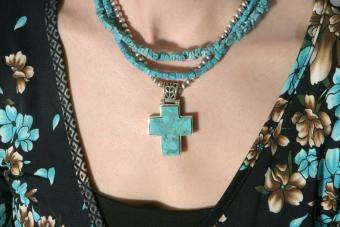
Intro to Lapel Pins
Though in the past, lapel pins had a specific use, today they are more or less the bumper sticker of personal adornment. They are worn to share messages about who you are including your professional affiliations, military service, favorite sports teams, events you've attended, or causes that you believe in. Lapel pins are unisex in style, so you won't find male or female versions -- just like bumper stickers can fit any kind of car.
The History
The earliest lapel pins were made just as adornment, rather than statements, and are actually quite difficult to distinguish from other forms of pins or brooches. Collectors often determine what it is just by the size of the pin. They were made both as costume jewelry and as gemstone or gold jewelry. Outside of the intrinsic value of the materials, lapel watches and cameos are some of the most valuable, as are those from famous jewelry designers such as Cartier.
Collectible Lapel Pins
Lapel pins often become collectibles, especially those created for anniversaries, special events, or commemorative purposes. The most popular include Hard Rock Cafe, military, Masonic or other fraternal orders, Harley Davidson, Apple Computer, or pins from famous political campaigns.
Because they come from so many sources and in so many themes, you can find a collectible lapel pin to complement nearly any collection, such as a sport or particular team, animated movie, art, an industry, a cause, or a time period.
Materials
Almost all lapel pins are made from base metals (instead of precious metals) including pewter, tin, or various zinc alloys. Some are plated with gold or silver, colored, etched or silk screened. Colored pins are the most common.
Colored Pins
Pins with colors, such as patriotic designs with flags, are usually plated with another metal such as copper or or gold. This process makes the colors clearer and more vivid. The surface colors are either enamel or colored epoxies. In pins made for anniversaries or commemorative occasions, the maker may add cubic zirconia or other synthetic stones.
Cloisonne is an ancient technique that uses a glass-like enamel powder that is melted into separate metal "cells" on the surface of a piece of metal. Each color is fired separately and polished between firings. This is one of the highest-quality kinds of enamel for lapel pins.
Silk Screened or Offset Printing
Both of these techniques copy an image onto the pin in what is similar to a printing process. The image is then covered with a clear coating, usually enamel, to protect it and add a surface gloss. Photographs are the most common images, but you can also find drawings and even postage stamps.
Fastenings
Lapel pins are usually attached with a clutch, rather like a tie tack. The military or butterfly clutch is the most secure because there is a small mechanism inside that has to be released to take the pin off. Some of the earliest lapel pins use a safety clasp rather than a clutch.
Buying Lapel Pins
Lapel pins are very affordable. Even collectible pins sell for around ten to twenty dollars. Rare and antique pins rarely cost more than a few hundred dollars, though there are some that have sold for more than a thousand. You can find collectible pins in numerous locations including:
- Antique and vintage shops
- Collectible stores
- Websites
- Online auctions
Brand new lapel pins cost between five and ten dollars. Fund raising pins may cost more since the cost includes a donation.
The lapel pin making process is highly automated and the materials are typically quite inexpensive. Lapel pins are cheapest when you purchase in bulk. For orders of one hundred or more, they are just a few dollars each. Smaller orders are more expensive per pin because making the mold is the most difficult step.







